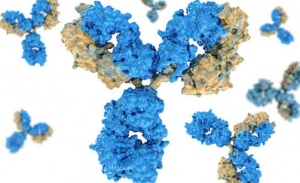A detailed introduction to engineered antibodiesPosted by beauty33 on December 12th, 2019 Genetically engineered antibodies, also known as recombinant antibodies, refer to antibody molecules expressed by transfecting appropriate receptor cells via recombinant DNA and protein engineering techniques to process and reprogram the genes encoding the antibodies according to different needs. Genetically engineered antibodies are general names of biopharmaceuticals prepared by high-tech biotechnology such as genetic engineering technology.
Introduction to genetically engineered antibodies Since the antibodies prepared at present are all mouse-derived, when applied clinically, they are heterologous antigens to humans, and repeated injections can produce anti-mouse antibodies, thereby attenuating or losing the therapeutic effect and increasing the occurrence of hypersensitivity reactions. Therefore, in the early 1980s, people began to use genetic engineering to prepare antibodies and reduce the immunogenicity and function of murine antibodies. At present, a partial amino acid sequence of a human antibody is used to replace the sequence of some mouse-derived antibodies, and a genetically engineered antibody is prepared by modification, which is called a third-generation antibody. The types of genetically engineered antibody Genetically engineered antibodies mainly include chimeric antibodies, humanized antibodies, fully human antibodies, single chain antibodies, bispecific antibodies, etc.
The development of genetic engineering antibody Intracellular antibody Recently, the US FDA emphasized that genetically engineered antibodies currently account for approximately 30% of biological agents in clinical trials. Recombinant antibodies are becoming smaller and smaller, and might be reconstituted into multivalent molecules, or fused to other molecules such as radionuclides, toxins, enzymes, liposomes, and viruses. The advent of recombinant technology has led to innovation in screening, humanization, and antibody production, and has replaced hybridoma technology, making antibody-based drug design possible. Like it? Share it!More by this author |



